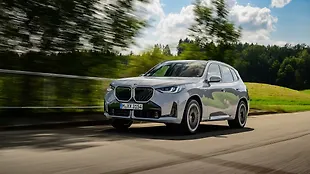Introduction
There is no stopping the SUV mania in the country, with manufacturers having already launched or planning to launch SUVs with prices starting closer to the Rs5 lakh budget segment. And this price segment is currently dominated by hatchbacks, the most popular two of them being the Maruti Suzuki Swift and the Hyundai Grand i10 Nios. We put these two through our rigorous real-world tests and measurement comparisons to find out which one is the right buy for you.
Performance
| Engine Performance | 2021 Maruti Suzuki Swift | Hyundai Grand i10 Nios |
| Power | 89bhp @ 6000rpm | 82bhp @ 6000rpm |
| Torque | 113Nm @ 4400rpm | 114Nm @ 4000rpm |
For 2021, the Maruti Suzuki Swift has received a new petrol engine and that’s the only option it gets. The Grand i10 Nios, meanwhile, is offered with two petrol engines, including a much more powerful turbocharged unit, along with a diesel engine. To keep it fair, we will only be comparing the naturally-aspirated 1.2-litre petrol motors offered on both models.
| Performance (CarWale Tested) | 2021 Maruti Suzuki Swift | Hyundai Grand i10 Nios |
| 0-60kmph | 4.93 seconds | 5.67 seconds |
| 0-100kmph | 11.35 seconds | 12.82 seconds |
The higher peak power developed by the Swift made it quicker from a standing start than the Grand i10 Nios in both 0-60kmph and 0-100kmph runs. Both engines pull smoothly to the redline and are hardly audible till you reach there.
| Performance (CarWale Tested) | 2021 Maruti Suzuki Swift | Hyundai Grand i10 Nios |
| 20-80kmph | 14.35 seconds | 13.11 seconds |
| 40-100kmph | 17.60 seconds | 20.38 seconds |
The Grand i10’s 1Nm higher peak torque figure is developed 400rpm earlier than the Swift, giving it a slight advantage during rolling acceleration tests at city speeds. The Grand i10 will feel peppier to drive in the city. With 7bhp more on tap and slightly shorter gearing, the Swift accelerates faster at higher speeds – overtaking at highway speeds will be quicker in the Swift.
Fuel Efficiency
| Efficiency (CarWale Tested) | Old Maruti Suzuki Swift | Hyundai Grand i10 Nios |
| City | 13.69kmpl | 13.07kmpl |
| Highway | 17.9kmpl | 17.05kmpl |
| Fuel Tank Capacity | 37-litres | 37-litres |
| Minimum Range | 507km | 484km |
Unfortunately, we have not been able to put the new Swift through our rigorous fuel efficiency tests. The previous Swift already had a slight advantage over the Grand i10 Nios thanks to its lower kerb weight and with the addition of fuel-saving technologies like an idle start/stop system, improved engine heat management, and lower piston friction the new Swift is expected to only increase that advantage. We will have to wait till we can get our hands on the Swift again before declaring a definitive winner.
Interior Space
| Exterior Dimensions | 2021 Maruti Suzuki Swift | Hyundai Grand i10 Nios |
| Length | 3845mm | 3805mm |
| Width | 1735mm | 1680mm |
| Height | 1530mm | 1520mm |
| Wheelbase | 2450mm | 2450mm |
Buyers expect the best space for the money in this segment and overall the Swift has an advantage from the get-Go, being larger than the Grand i10 Nios in every exterior dimension parameter, except the wheelbase. The smaller dimensions might give the Grand i10 Nios a slight advantage during parking or negotiating tighter situations, but it greatly affects its ability to fit people and their cargo.
| Front Row Space (CarWale Measured) | 2021 Maruti Suzuki Swift | Hyundai Grand i10 Nios |
| Legroom | 660mm to 890mm | 650mm to 860mm |
| Headroom | 960mm to 1020mm | 940mm to 1000mm |
| Shoulder Room | 1320mm | 1300mm |
The front passengers in the Swift will enjoy slightly more legroom, headroom, and shoulder room than what is offered in the Grand i10 Nios.
| Front Seat (CarWale Measured) | 2021 Maruti Suzuki Swift | Hyundai Grand i10 Nios |
| Seat Base Length | 600mm | 600mm |
| Backrest Height | 500mm | 520mm |
The front seats on both the cars are comparable, with the Swift featuring a more contoured seat base and seatback bolsters than the Grand i10. But the Nios may be preferred by those with larger frames as they are not as restrictive and offer more support to the shoulders because of their one-piece design.
Rear Row Space (CarWale Measured) | 2021 Maruti Suzuki Swift | Hyundai Grand i10 Nios |
| Legroom | 660mm to 890mm | 640mm to 850mm |
| Headroom | 940mm | 950mm |
| Shoulder Room | 1300mm | 1190mm |
Both cars are not great in terms of rear-seat space, but the Swift beats the Grand i10 Nios in terms of the space available. Hyundai has had to compromise on rear space due to the aggressive exterior space of the Grand i10 and overall smaller dimensions of the car. The biggest disadvantage for the grand i10 is its narrow shoulder room, fitting three in here will be much more difficult than the Swift, even though it has a flatter floor.
Rear Seat (CarWale Measured) | 2021 Maruti Suzuki Swift | Hyundai Grand i10 Nios |
| Seat Base Length | 480mm | 490mm |
| Backrest Height | 580mm | 600mm |
The Grand i10 Nios redeems a bit for itself by offering a better-designed seating experience, with more seat recline angle, more headroom, and more support for your back and thighs. This does not change the fact that the Grand i10 can only seat four people though.
Boot Space
| Boot Space | 2021 Maruti Suzuki Swift | Hyundai Grand i10 Nios |
| Length x Width x Height | 620mm x 1000mm x 520mm | 610mm x 1040mm x 500mm |
| Capacity | 268-litres | 260-litres |
| Loading Lip Height | 750mm | 740mm |
The lack of rear-seat space can also be attributed to the fact that Hyundai did not want to compromise the boot space on offer too much. The Swift has an 8-litre advantage in terms of cargo volume as compared to the Grand i10 Nios and also offers a 60:40-split-folding rear seat for added convenience. The Nios has a lower loading lip height which makes loading or unloading heavier items easier.
Features
The highlight features for both cars are limited to the top-of-the-line variants, with both featuring projector headlamps, digital driver information screens in the instrument cluster, touchscreen infotainment systems, automatic climate control systems, and all safety systems mandated by law.

The Swift gets LED projector headlamps as compared to the Nios’ halogen units. The Swift’s units are also light sensitive. It gets wider 185mm section tyres for better grip and handling characteristics. A cruise control system for a more comfortable drive on the highway. The highlight of the new engine of course is the fuel-saving start/stop system. The coloured driver information screen as a part of the instrument cluster looks good and offers more information too. The AMT variants get traction control and hill-hold function as additional safety features. Surprisingly, the Grand i10 is not offered with ISOFIX child-seat anchor points in any variant, which the Swift gets.

The Grand i10 Nios has a better interior fit and finish and gets a lighter interior theme, making the cabin feel less compact than it is. Some may prefer it to the all-black interior of the Swift. In terms of unique features, the Grand i10 Nios gets projector front fog lamps, chrome exterior door handles, a shark fin antennae, cooled glovebox, wireless phone charging pad, and rear AC vents.

The Grand i10 Nios scores significantly more just for the sheer number of powertrain options it is offered with. Apart from the 1.2-litre naturally-aspirated petrol engine available with both a manual and an AMT, it can also be had with dual-fuel petrol and CNG manual powertrain, a turbo-petrol motor with a manual transmission, and a diesel engine with both manual and automated manual transmissions.
Price
| Price Comparison (ex-showroom Delhi) | 2021 Maruti Suzuki Swift | Hyundai Grand i10 Nios |
| Petrol MT Variants | Rs 5.73 lakh to Rs 7.91 lakh | Rs 5.24 lakh to Rs 7.38 lakh |
| Turbo-Petrol MT Variants | Not Available | Rs 7.83 lakh to Rs 7.88 lakh |
| Petrol AMT Variants | Rs 6.86 lakh to Rs 8.41 lakh | Rs 6.62 lakh to Rs 8.31 lakh |
| CNG Variants | Not Available | Rs 6.85 lakh to Rs 7.39 lakh |
| Diesel MT Variants | Not Available | Rs 7.16 lakh to Rs 8.45 lakh |
| Diesel AMT Variants | Not Available | Rs 8.31 lakh |
The Hyundai Grand i10 undercuts the Swift in terms of pricing. But the sheer number of options available to buyers of the Grand i10 is highlighted when comparing the prices.
Verdict
Both the Maruti Suzuki Swift and the Hyundai Grand i10 Nios offer a lot for the asking price, but the Maruti is at a disadvantage because it does not offer a variety of powertrains like the Hyundai. Those looking for a spacious, peppy, efficient car with the backup of a proven and large service network should have the Maruti Swift high on their list. But the Grand i10 just edges past the Swift because of the interior quality and especially because of the engine options on offer – the CNG and Diesel powertrains offer better savings in the long run, especially seeing how fuel prices have been rising recently.
Pictures by Kapil Angane and Kaustubh Gandhi

![Hyundai Grand i10 Nios [2019-2023] Image Hyundai Grand i10 Nios [2019-2023] Image](https://imgd.aeplcdn.com/272x153/n/cw/ec/35465/grand-i10-nios-exterior-right-front-three-quarter-2.jpeg?q=80)























